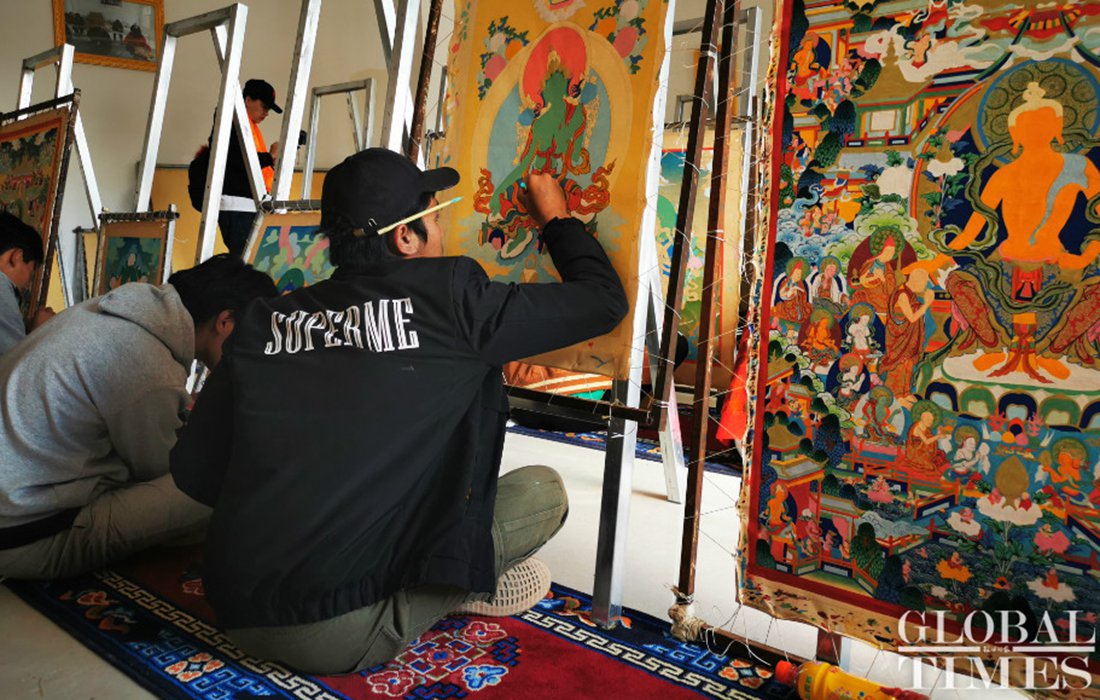Editor's Note:
Apprentices learn to draw Thangka, a traditional Tibetan Buddhist art form, at a workshop in Tongren county, Huangnan Tibetan Autonomous Prefecture in Qinghai Province. (Photos: Hu Yuwei/GT)
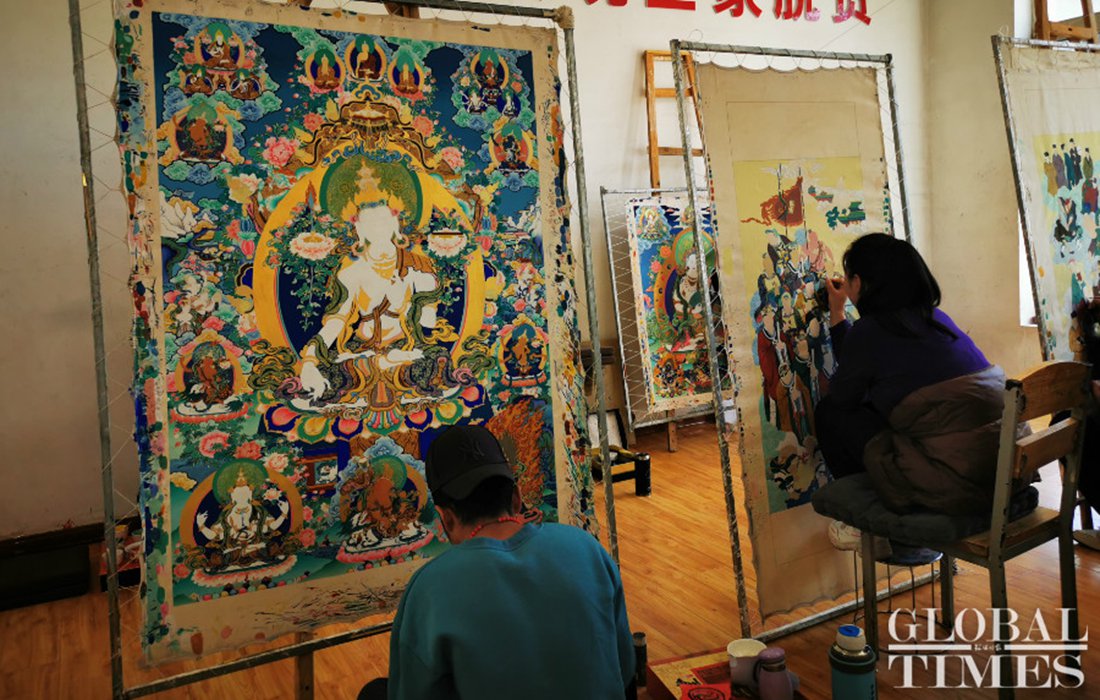 Apprentices learn to draw Thangka, a traditional Tibetan Buddhist art form, at a workshop in Tongren county, Huangnan Tibetan Autonomous Prefecture in Qinghai Province. Photo: Hu Yuwei/ GT
Apprentices learn to draw Thangka, a traditional Tibetan Buddhist art form, at a workshop in Tongren county, Huangnan Tibetan Autonomous Prefecture in Qinghai Province. Photo: Hu Yuwei/ GT 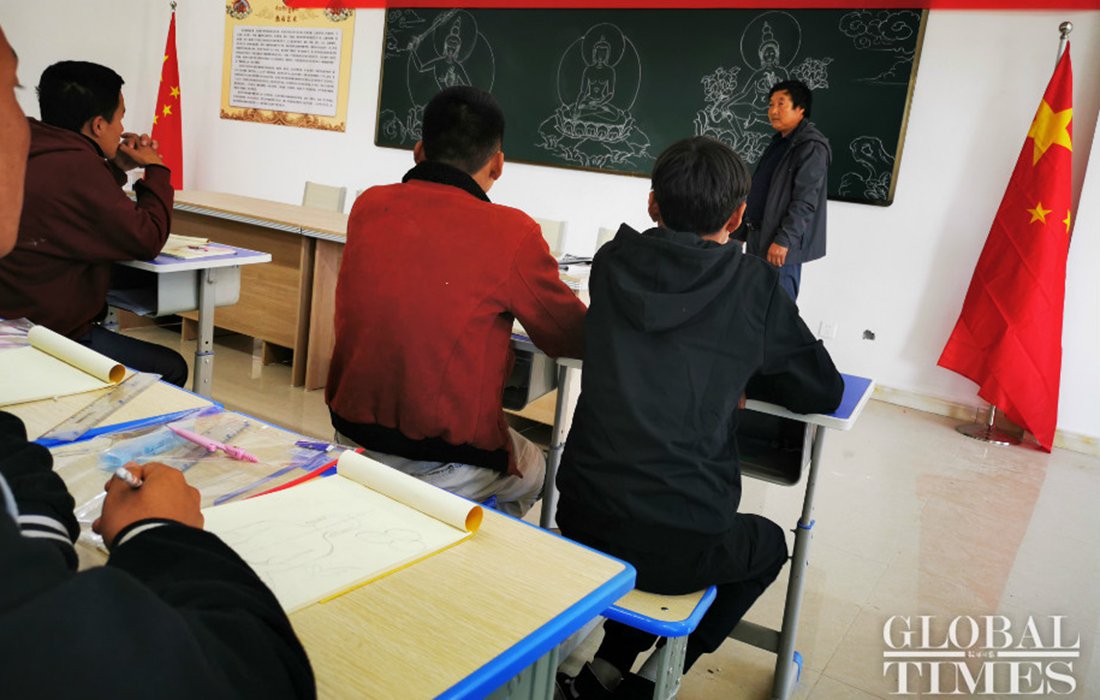 The intangible cultural heritage training workshop for Thangka paintings opens in Tongren county of Huangnan Tibetan Autonomous Prefecture in Qinghai Province, the birthplace of Thangka paintings. Photo: Hu Yuwei/ GT
The intangible cultural heritage training workshop for Thangka paintings opens in Tongren county of Huangnan Tibetan Autonomous Prefecture in Qinghai Province, the birthplace of Thangka paintings. Photo: Hu Yuwei/ GT 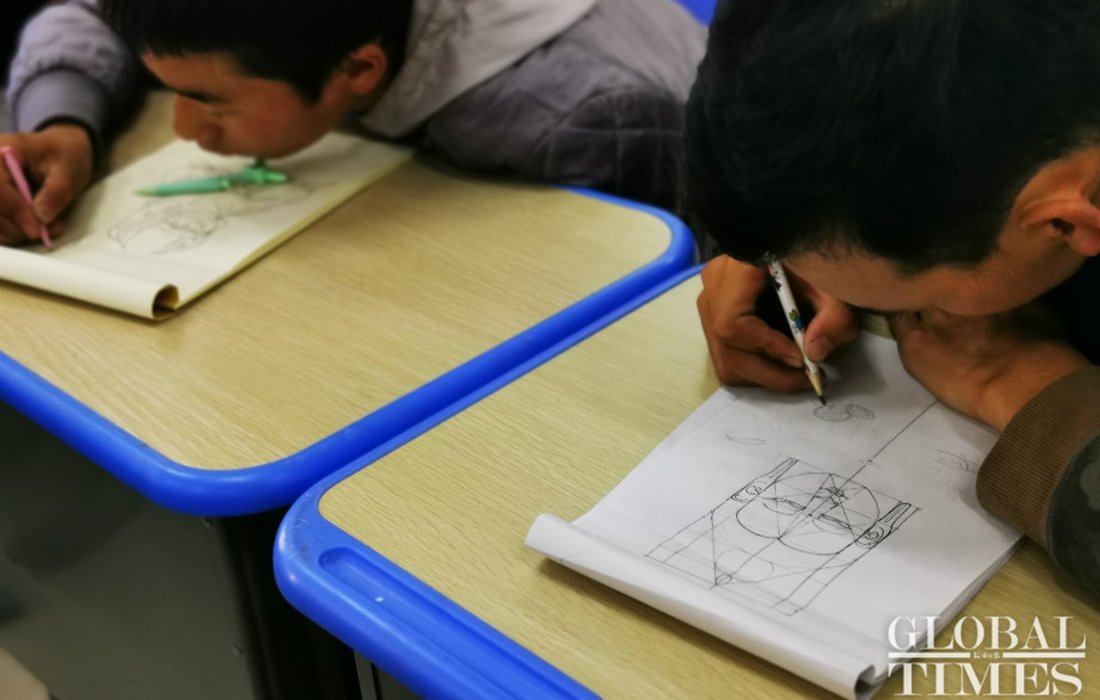 Apprentices at the Thangka paintings workshop practice the art of measurement, an important step in the creative design of the Thangka. Photo: Hu Yuwei/ GT
Apprentices at the Thangka paintings workshop practice the art of measurement, an important step in the creative design of the Thangka. Photo: Hu Yuwei/ GT 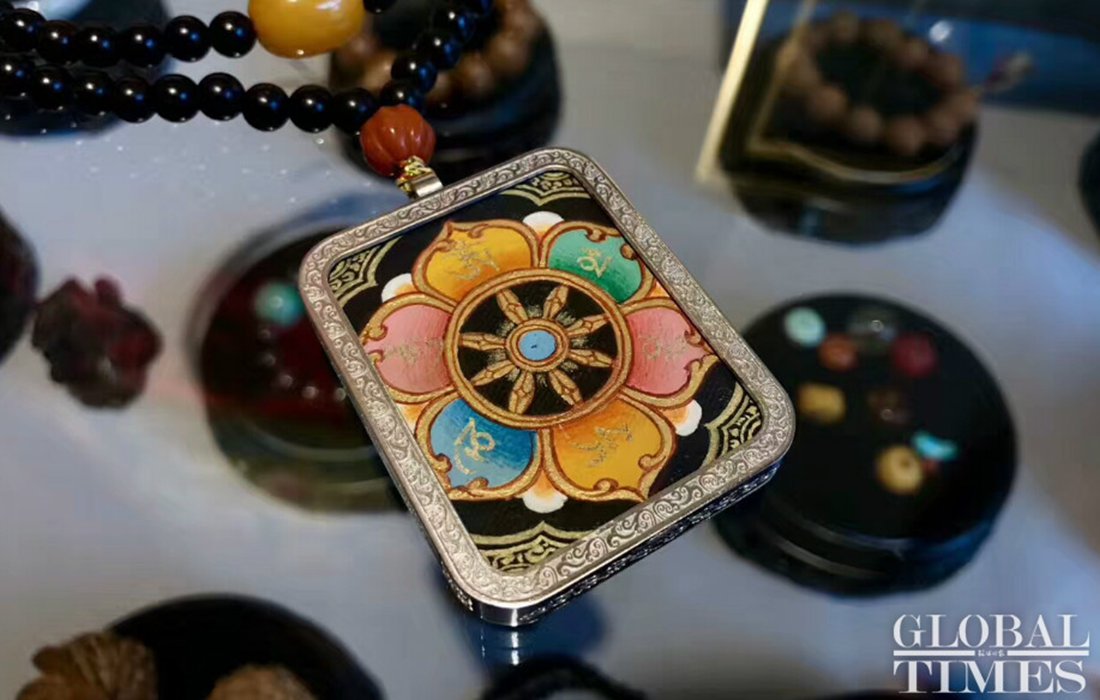 A Thangka painting necklace made by a 21-year-old apprentice at the workshop in Tongren county Photo: Courtesy of the apprentice
A Thangka painting necklace made by a 21-year-old apprentice at the workshop in Tongren county Photo: Courtesy of the apprentice 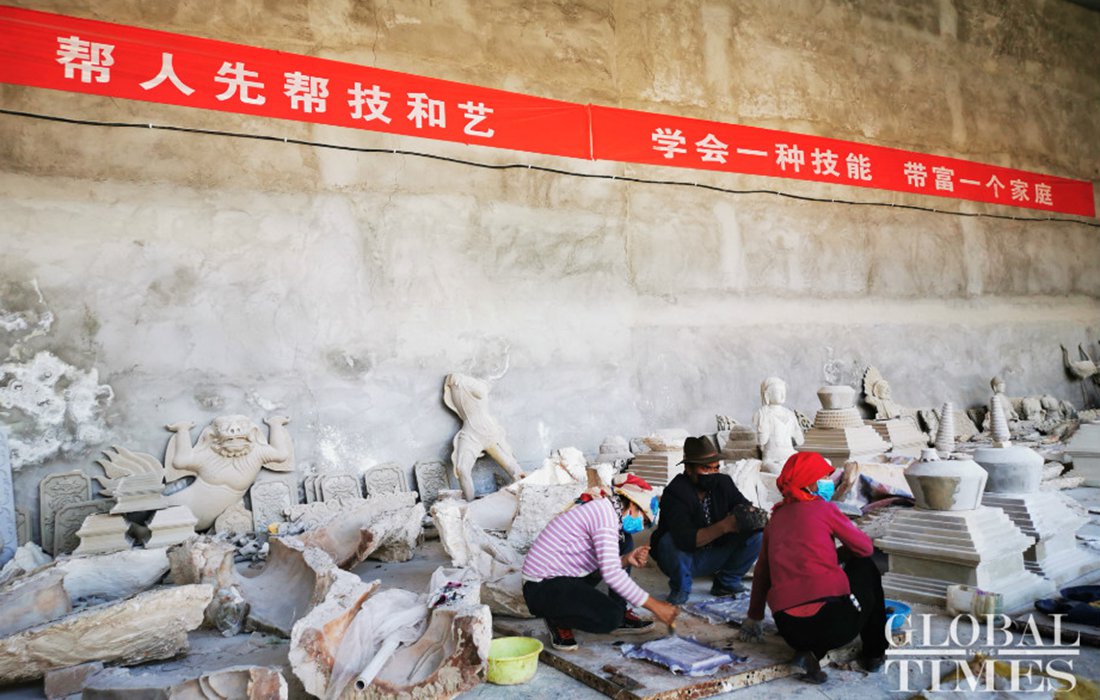 Local Tibetans learn to make the sculptures used at the Tibetan temples in Tongren county, Qinghai Province. Photo: Hu Yuwei/ GT
Local Tibetans learn to make the sculptures used at the Tibetan temples in Tongren county, Qinghai Province. Photo: Hu Yuwei/ GT 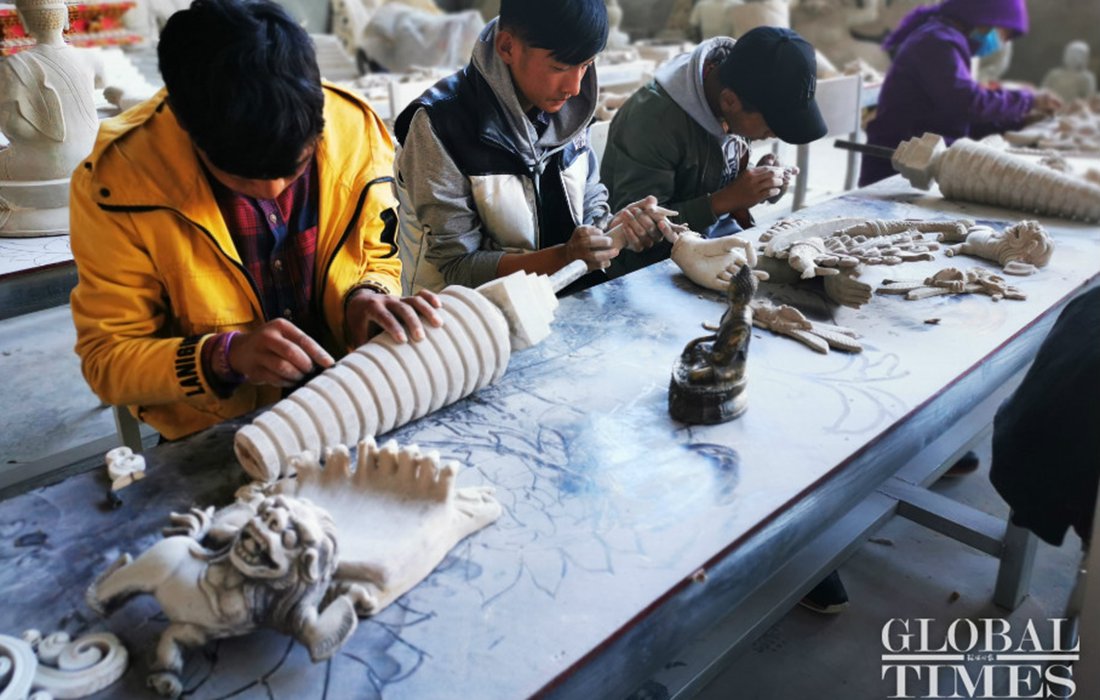 Local Tibetans learn to make the sculptures used at the Tibetan temples in Tongren county, Qinghai Province. Photo: Hu Yuwei/ GT
Local Tibetans learn to make the sculptures used at the Tibetan temples in Tongren county, Qinghai Province. Photo: Hu Yuwei/ GT 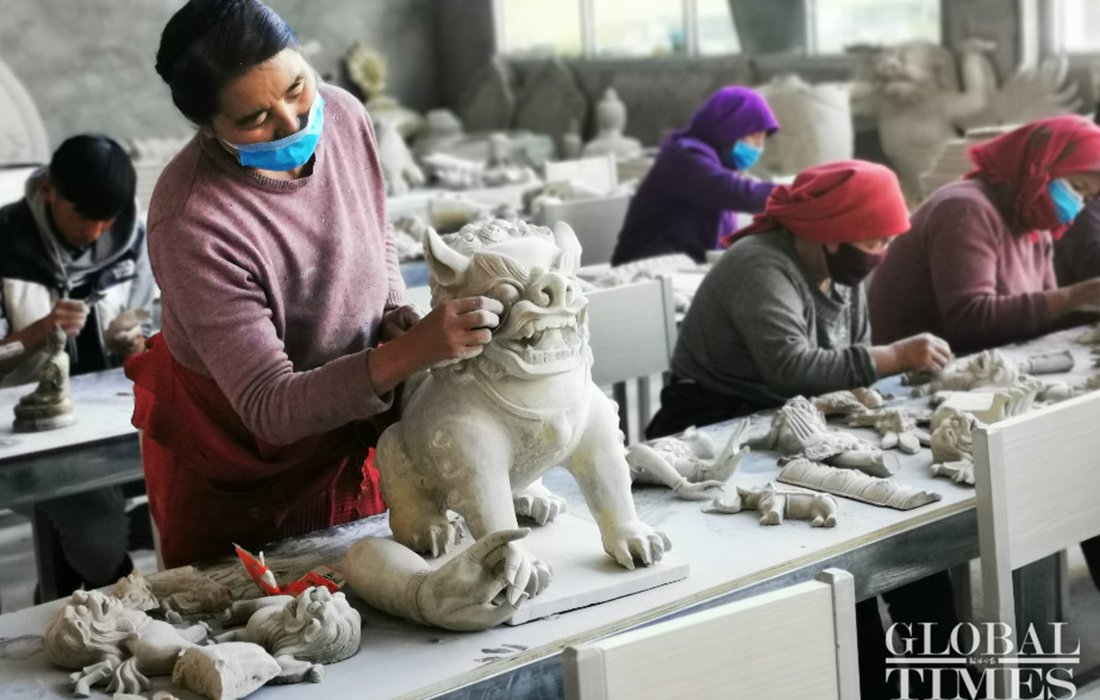 Local Tibetans learn to make the sculptures used at the Tibetan temples in Tongren county, Qinghai Province. Photo: Hu Yuwei/ GT
Local Tibetans learn to make the sculptures used at the Tibetan temples in Tongren county, Qinghai Province. Photo: Hu Yuwei/ GT 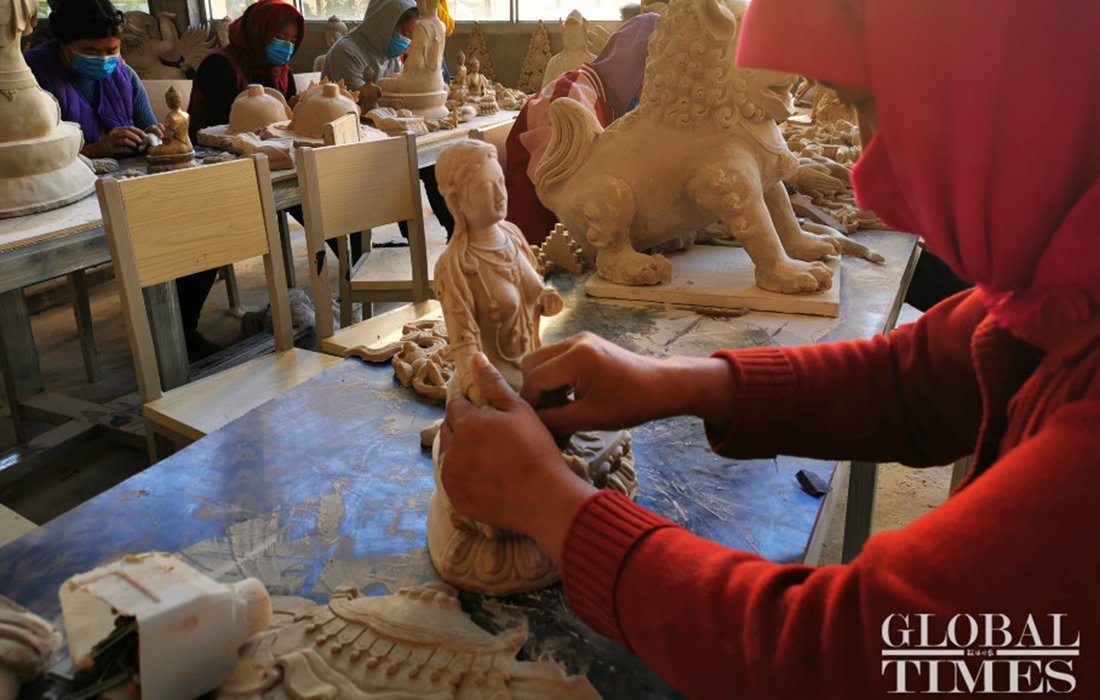 Local Tibetans learn to make the sculptures used at the Tibetan temples in Tongren county, Qinghai Province. Photo: Hu Yuwei/ GT
Local Tibetans learn to make the sculptures used at the Tibetan temples in Tongren county, Qinghai Province. Photo: Hu Yuwei/ GT 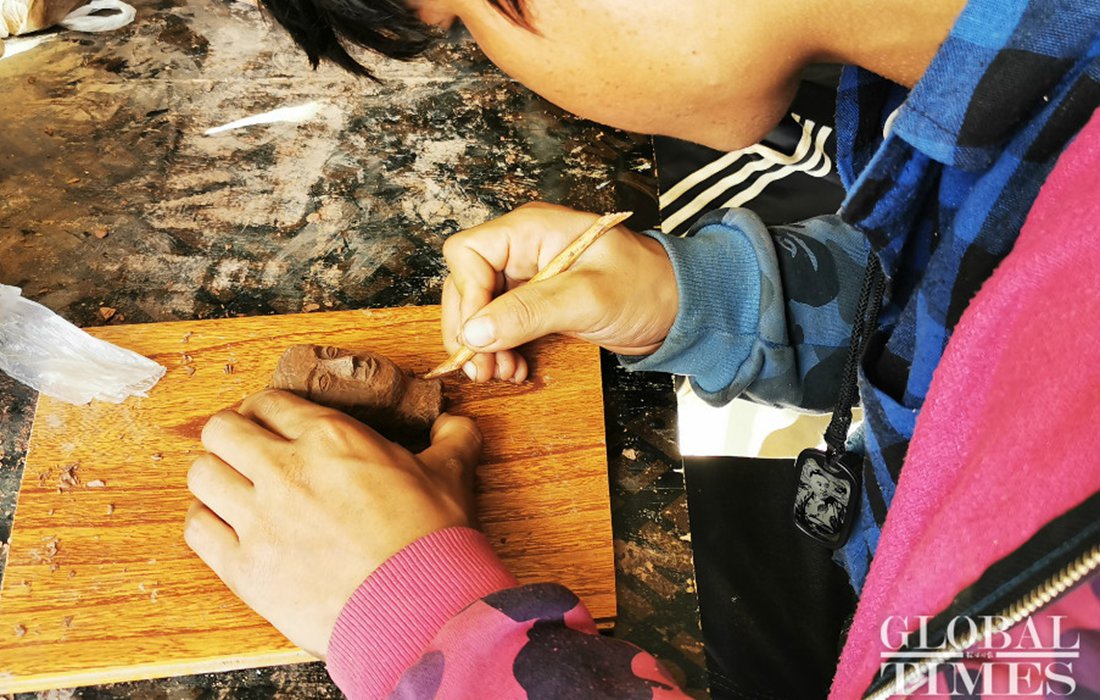 Tibetan youth learn to engrave figure of Buddha at the workshop in Tongren county, Qinghai Province. Photo: Hu Yuwei/ GT
Tibetan youth learn to engrave figure of Buddha at the workshop in Tongren county, Qinghai Province. Photo: Hu Yuwei/ GT 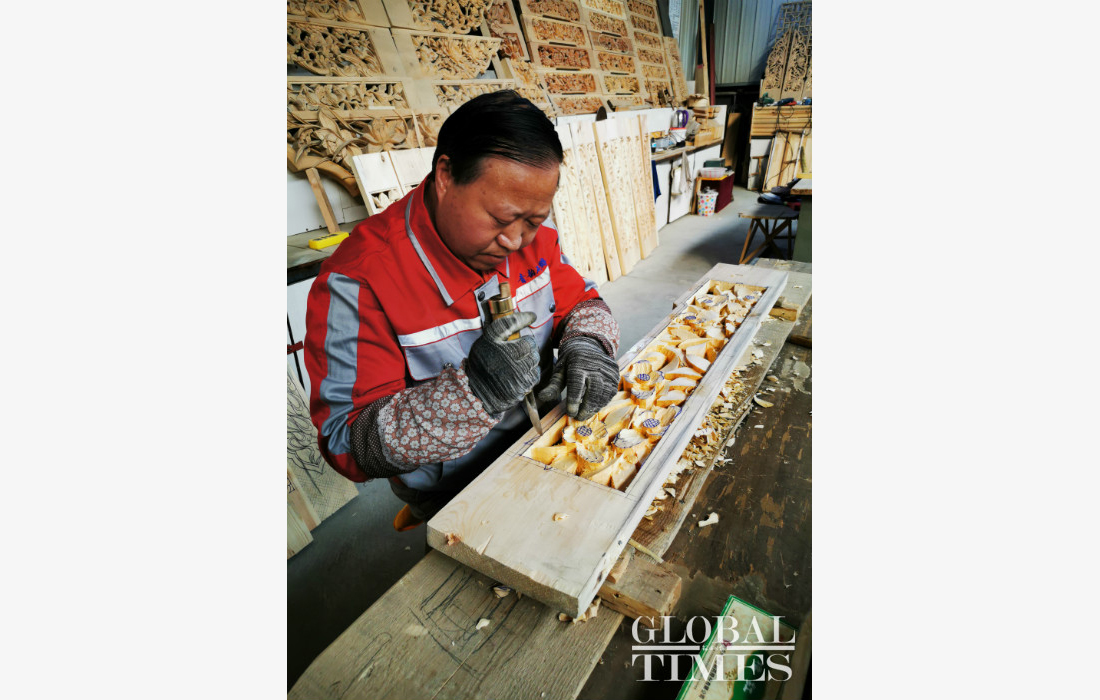 People of the Hui ethnicity enrich themselves by learning Linxia wood carving, one of local traditional folk arts, which is mainly used to decorate local mosques and other ancient residential buildings, in Linxia Hui Autonomous Prefecture in Northwest China's Gansu Province. Photo: Hu Yuwei/ GT
People of the Hui ethnicity enrich themselves by learning Linxia wood carving, one of local traditional folk arts, which is mainly used to decorate local mosques and other ancient residential buildings, in Linxia Hui Autonomous Prefecture in Northwest China's Gansu Province. Photo: Hu Yuwei/ GT 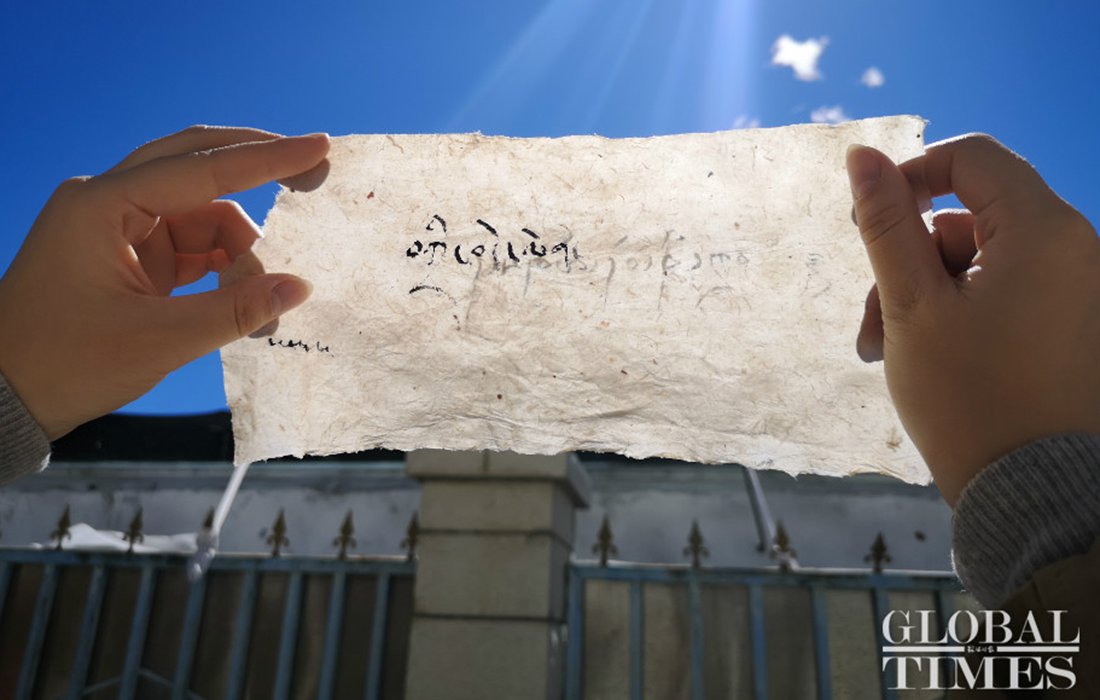 A Tibetan craftsman produces Tibet Xoleg paper that has a tough texture, strong abrasion and corrosion resistance, and can be preserved for a long time. The words on the paper will not be damaged even if it is soaked in water. It is often used to transcribe Buddhist scriptures. In 2007, it was listed as a national intangible cultural heritage. Photo: Hu Yuwei/ GT
A Tibetan craftsman produces Tibet Xoleg paper that has a tough texture, strong abrasion and corrosion resistance, and can be preserved for a long time. The words on the paper will not be damaged even if it is soaked in water. It is often used to transcribe Buddhist scriptures. In 2007, it was listed as a national intangible cultural heritage. Photo: Hu Yuwei/ GT 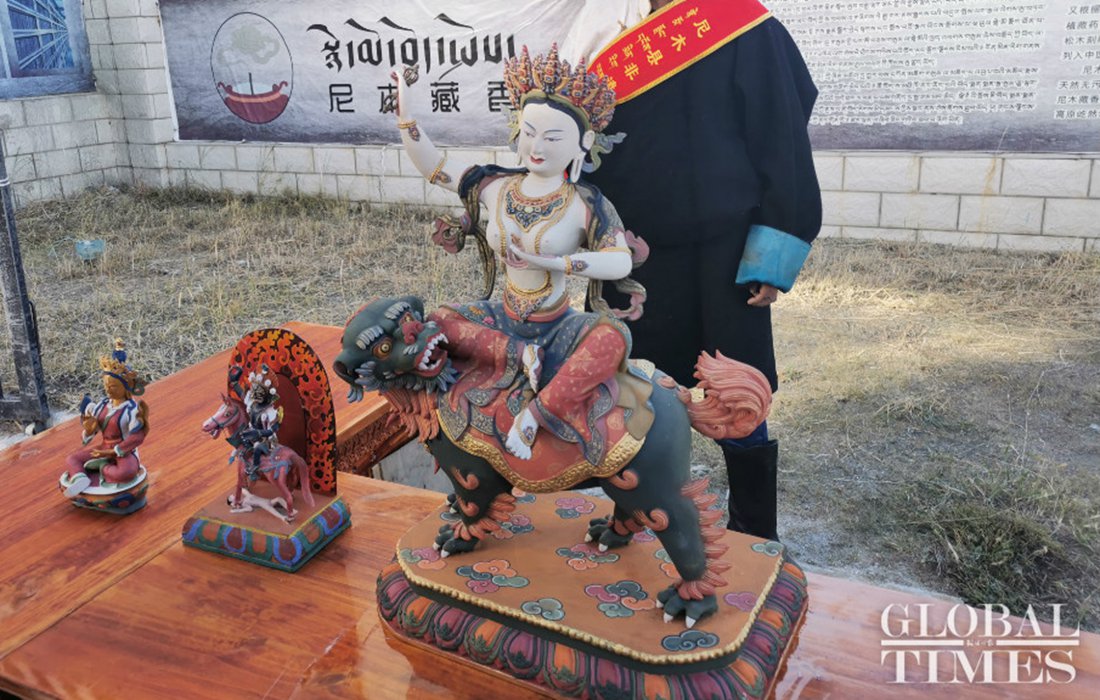 Buddhist sculptures produced by local Tibetan inheritor of intangible culture heritage Photo: Hu Yuwei/ GT
Buddhist sculptures produced by local Tibetan inheritor of intangible culture heritage Photo: Hu Yuwei/ GT 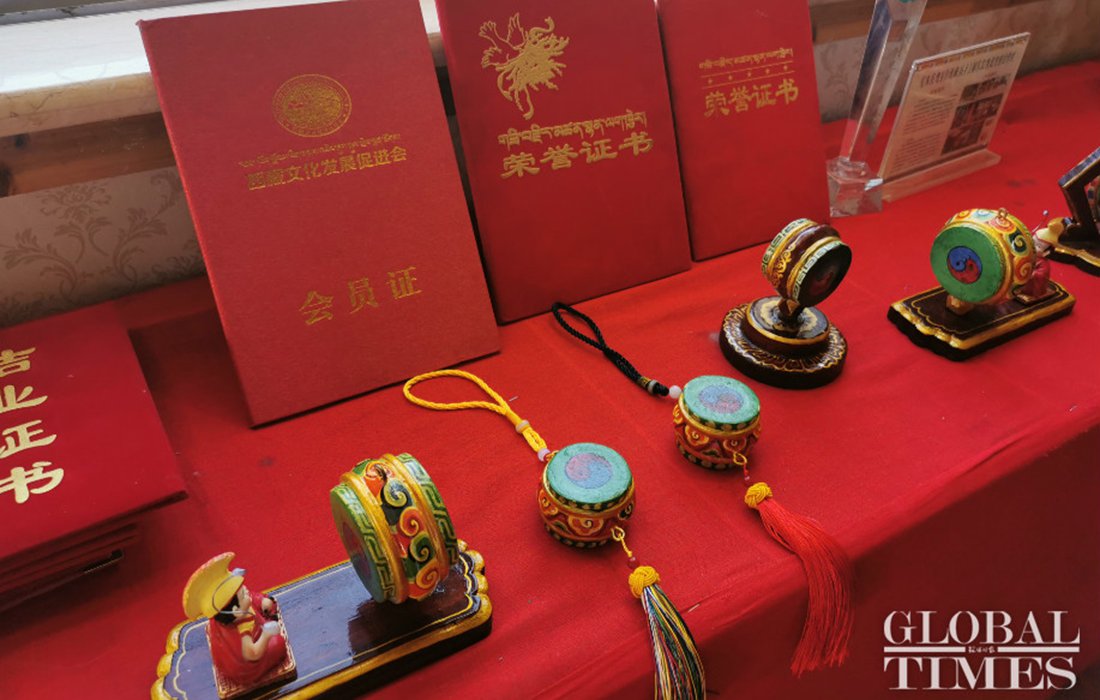 Handmade miniature Tibet Xoleg drum Photo: Hu Yuwei/ GT
Handmade miniature Tibet Xoleg drum Photo: Hu Yuwei/ GT 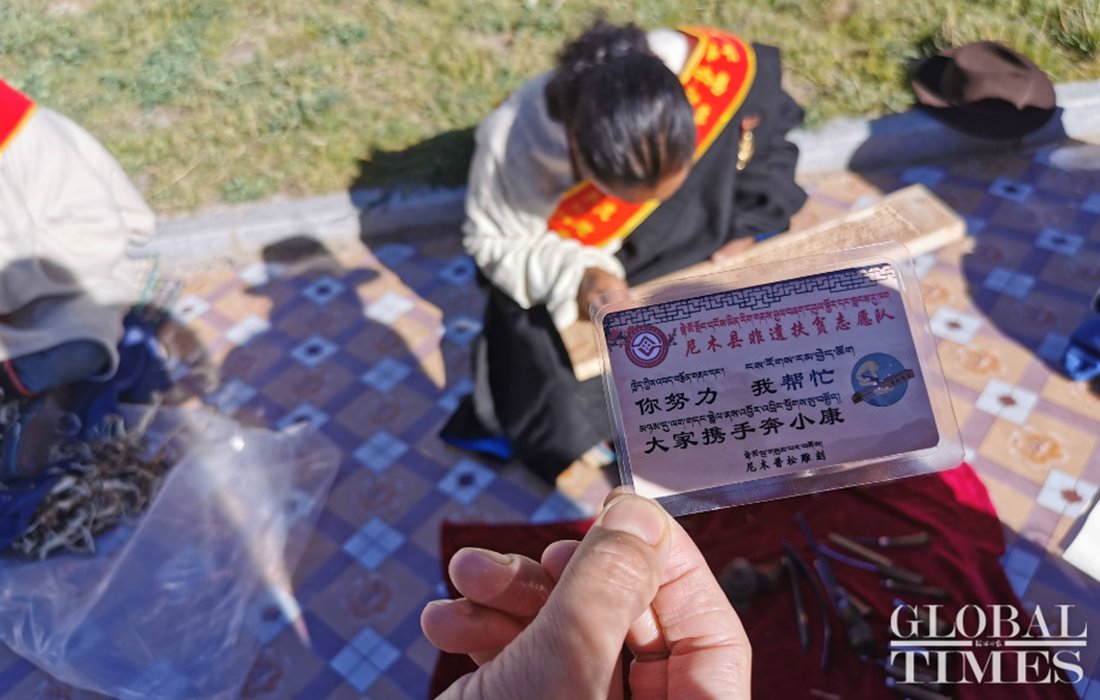 Volunteer groups in Nyemo county send over contact cards to promote “shaking off poverty through Tibetan traditions.” Photo: Hu Yuwei/ GT
Volunteer groups in Nyemo county send over contact cards to promote “shaking off poverty through Tibetan traditions.” Photo: Hu Yuwei/ GT 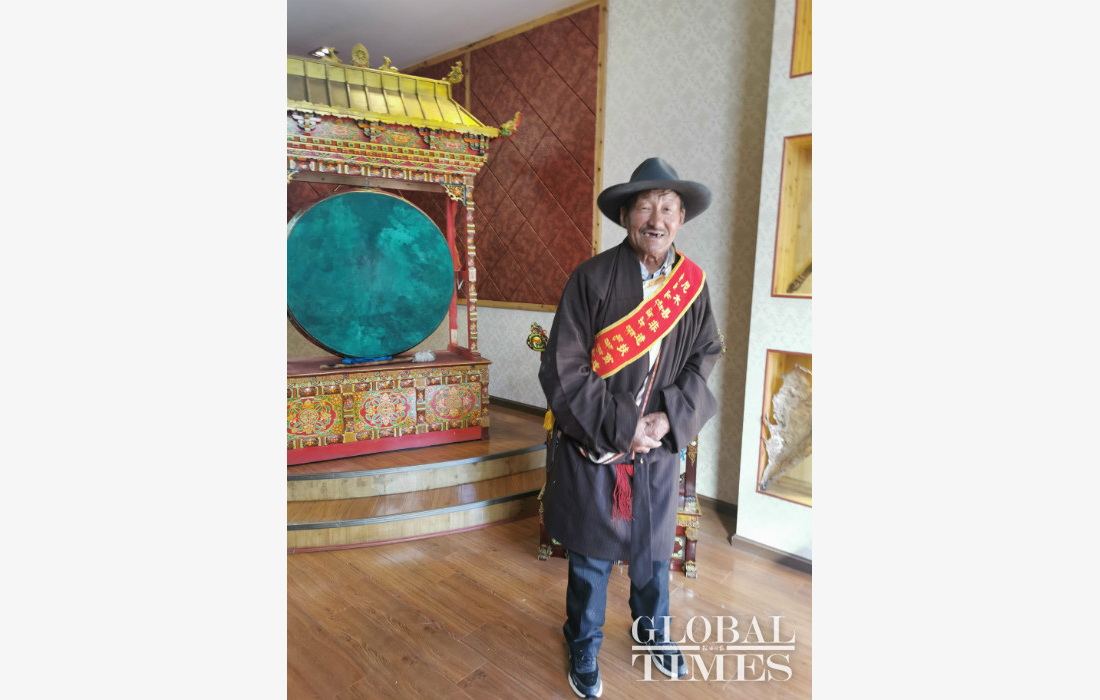 The 68-year-old Gyalen, a national inheritor of the Xoleg Tibet drum Photo: Hu Yuwei/ GT
The 68-year-old Gyalen, a national inheritor of the Xoleg Tibet drum Photo: Hu Yuwei/ GT 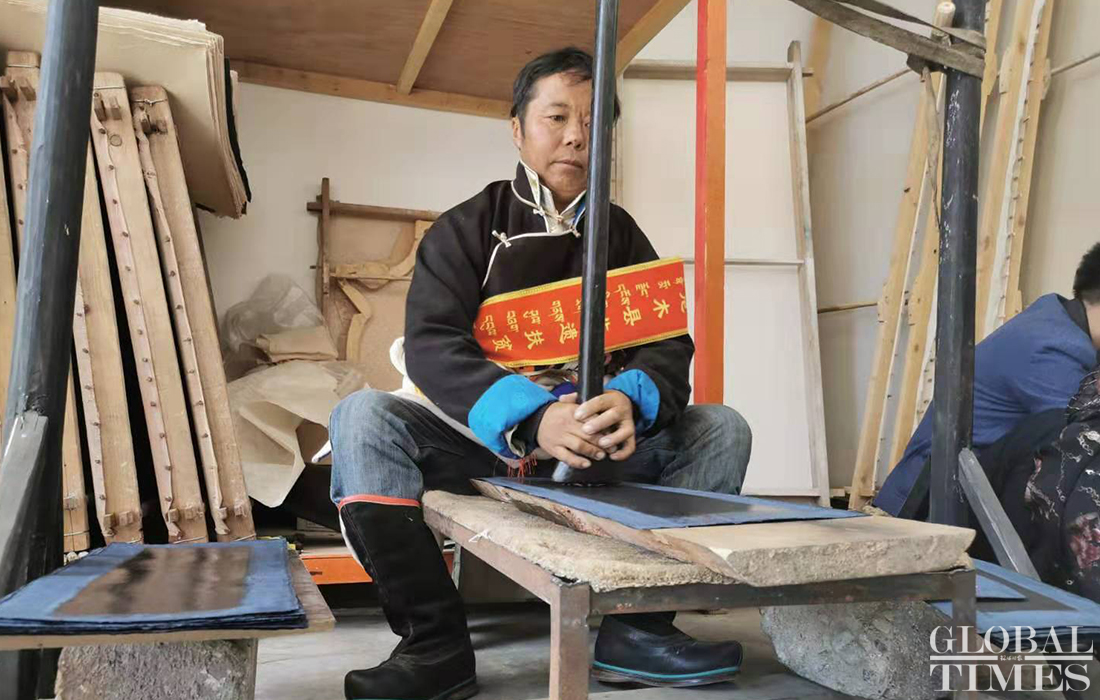 A Tibetan craftsman produces Tibet Xoleg paper that has a tough texture, strong abrasion and corrosion resistance, and can be preserved for a long time. The words on the paper will not be damaged even if it is soaked in water. It is often used to transcribe Buddhist scriptures. In 2007, it was listed as a national intangible cultural heritage. Photo: Hu Yuwei/ GT
A Tibetan craftsman produces Tibet Xoleg paper that has a tough texture, strong abrasion and corrosion resistance, and can be preserved for a long time. The words on the paper will not be damaged even if it is soaked in water. It is often used to transcribe Buddhist scriptures. In 2007, it was listed as a national intangible cultural heritage. Photo: Hu Yuwei/ GT 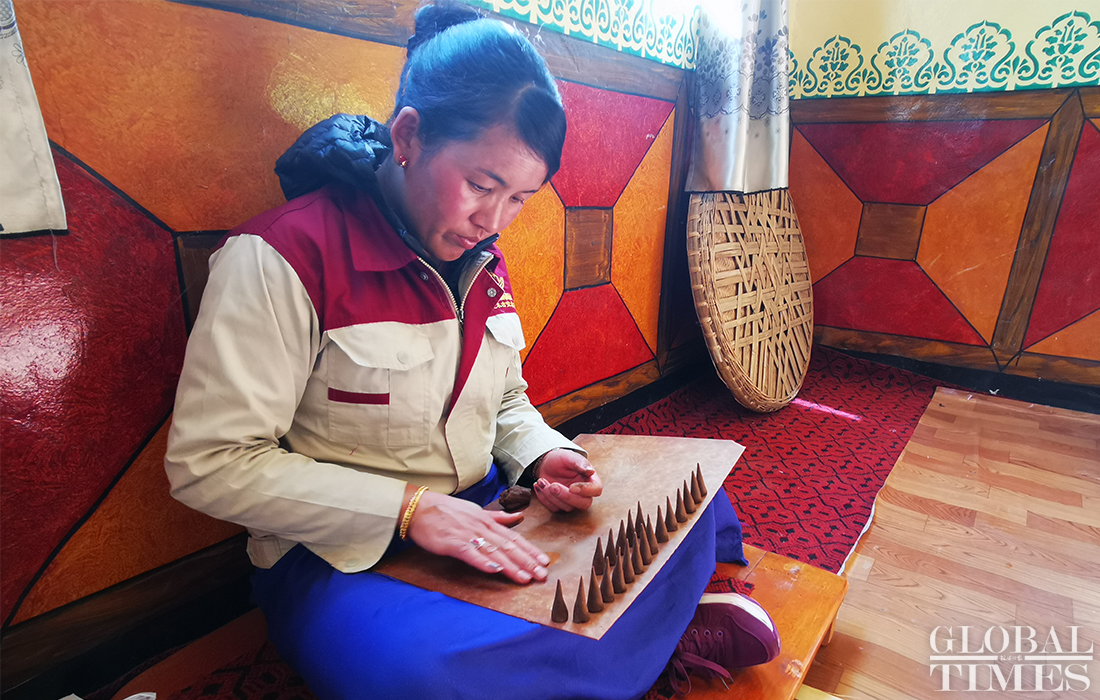 Tibetan women in Nyemo county, Southwest China's Tibet Autonomous Region, learn to make Tibetan incense. Photo: Hu Yuwei/ GT
Tibetan women in Nyemo county, Southwest China's Tibet Autonomous Region, learn to make Tibetan incense. Photo: Hu Yuwei/ GT

















